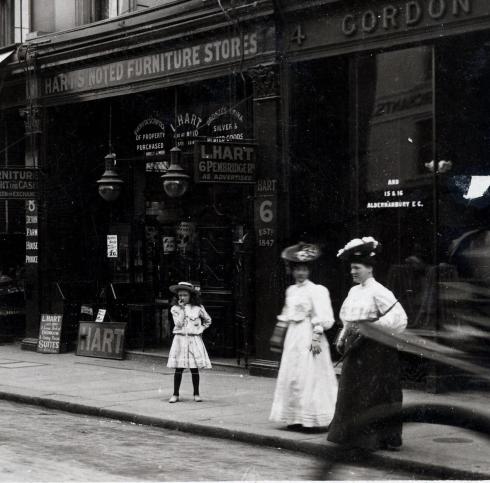This week’s post arise from some postcards in a scrapbook in our collection, put together by members of the Old Comrades Association of the 22nd Royal Fusilers (The Kensingtons). the scrapbook contains memorabilia relating to reunions, trips to places in France and Belgium where the members served, and to war cemeteries and memorials. Along with photographs taken by the travellers, there were also printed postcards bought by them while travelling. I realised that this was not an uncommon form of souvenir when I found postcards of the same type in a small album I brought home from my mother’s house a couple of years ago. This is a typical example.
At first glance it seems like an odd form of souvenir, scenes of destruction, even ones as striking as this, but we have to remember I suppose that these scenes were fresh in the minds of survivors of the Great War, still trying to make sense of an intense period in their own histories.
Many former soldiers must have travelled back to places they remembered.
When they last saw these ruins, they must have been accompanied the sounds of warfare and the threat of personal danger.
The first five images come from the album now in my possession.
The next ones are from the OCA scrapbook.
See how the road has been cleared but not the rubble. The authorities must have wanted the ruins to be seen, so show what had happened to buildings which were once an integral part of everyday life.
Some of the photographs were taken while the war was still taking place.
This one shows the same building in 1914.
In some cases, substantial parts of the bombed or shelled buildings remained.
In other the devastation looks almost total.
Another part of the same city
This one shows more low level damage.
A figure is visible on the right of the picture.
These picture are all sombre, and remind us of the lives lost in the Great War, but at the same time they remind us of the ruins of antiquity, as in this postcard from my mother’s album, posted in 1912.
The Sphinx was still partially covered by sand.
The message ( I have no idea who the recipient was, or the sender) is simply a birthday greeting. The two people concerned (two women, or a woman and a man?) had no idea what new forms of ruin would be created by the events to come in their near future.
Postscript
I’ll come back to the OCA in a future post, but I thought these unusual postcard images deserved their own outing. We’ve become used to the destruction of war in modern cities, but we should remember past destruction as well, just as the members of the OCA did.















































